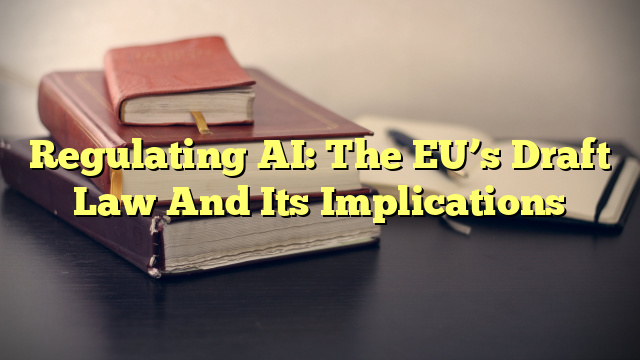Table of Contents
- Introduction
- What is the EU regulation for AI?
- What does the EU AI Act do?
- What are the unacceptable risks of the EU AI Act?
Introduction
AI is developing rapidly, and with it comes a need for regulation. The European Commission’s draft law for AI was released in April 2020, aiming to regulate the development and use of AI systems across the European Union. The document set out the Commission’s plans to tackle legal, ethical, and economic issues arising from the use of AI.
What is the EU regulation for AI?
The European Commission’s draft law for AI is based on the principle that AI should be developed for the benefit of society as a whole. This means that the EU aims to protect human rights and fundamental freedoms, while also ensuring that AI applications are subject to appropriate measures to prevent or mitigate any negative implications of their use.
The draft law focuses on the use of AI in sectors such as health, transport, and energy, and sets out a number of rules and obligations for companies and individuals using AI. These include requirements for transparency of AI systems, obligations to ensure data protection, and obligations to provide information about the use of AI systems. The draft law also establishes a certification framework for AI applications, which will help to ensure that AI systems comply with the requirements of the EU regulation.
The draft law also sets out a number of measures to ensure that AI is used responsibly, such as the establishment of an independent oversight body to monitor the development and use of AI systems. This body, the European Artificial Intelligence Board, will be responsible for assessing the potential impact of AI systems and ensuring that they are used in compliance with the principles set out in the draft law.
What does the EU AI Act do?
The draft law sets out a number of measures to ensure that AI is used responsibly. These include requirements for transparency of AI systems, obligations to ensure data protection, and obligations to provide information about the use of AI systems. The draft law also establishes a certification framework for AI applications, which will help to ensure that AI systems comply with the requirements of the EU regulation.
The draft law also sets out a number of measures to protect human rights and fundamental freedoms. These include the prohibition of certain uses of AI, such as those that are discriminatory or involve the use of AI in decision-making processes that could have a significant impact on individuals. The draft law also sets out rules for the development and use of AI systems, including requirements for robustness, accuracy, and security.
What are the unacceptable risks of the EU AI Act?
Whilst the draft law sets out a number of measures to ensure that AI is used responsibly, there are a number of risks associated with the use of AI. These include risks to human rights and fundamental freedoms, risks to data protection, and risks to the environment. There is also a risk that the regulations could be used to stifle innovation and competition, as businesses may be reluctant to invest in developing AI systems if there are too many restrictions on their use.
In addition, there is a risk that the certification framework will be too restrictive and may not be up to date with the latest developments in AI technology. This could lead to AI systems being developed that are not compliant with the regulations, and may have unacceptable impacts on individuals or the environment.
Finally, there is a risk that the European Artificial Intelligence Board will not be sufficiently independent, and may be subject to interference from political or commercial interests. This could lead to the decisions of the board being influenced by external factors, rather than being based on the principles of the draft law.
Conclusion
The European Commission’s draft law for AI is comprehensive and ambitious, aiming to ensure that AI is used responsibly and for the benefit of society as a whole. However, there are a number of risks associated with the use

